Related Research Articles
Sonic Team is a video game developer owned by the Japanese video game company Sega as part of its Sega CS Research and Development No. 2 division. Sonic Team is best known for the long-running Sonic the Hedgehog series and games such as Nights into Dreams and Phantasy Star Online.

The Sega Pico, also known as Kids Computer Pico, is an educational video game console by Sega Toys. Marketed as "edutainment", the main focus of the Pico was educational video games for children between 3 and 7 years old. The Pico was released in June 1993 in Japan and November 1994 in North America and Europe, later reaching China. It was succeeded by the Advanced Pico Beena, which was released in Japan in 2005. Though the Pico was sold continuously in Japan through the release of the Beena, in North America and Europe the Pico was less successful and was discontinued in early 1998, later being re-released by Majesco Entertainment. Releases for the Pico were focused on education for children and included titles supported by licensed franchised animated characters, including Sega's own Sonic the Hedgehog series. Overall, Sega claims sales of 3.4 million Pico consoles and 11.2 million game cartridges, and over 350,000 Beena consoles and 800,000 cartridges.

Sonic the Hedgehog is a fictional character created by Naoto Ohshima and Yuji Naka. The title character of Sega's Sonic the Hedgehog video game franchise, Sonic is an anthropomorphic blue hedgehog who can run at supersonic speeds and curl into a ball to attack enemies. He races through levels, collecting power-up rings and avoiding obstacles, as he seeks to defeat the mad scientist Doctor Eggman.
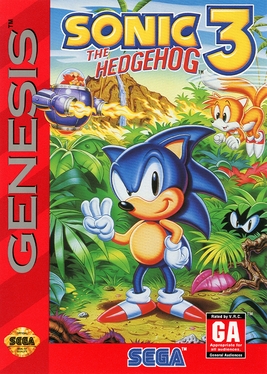
Sonic the Hedgehog 3 is a 1994 platform game developed and published by Sega for the Genesis. Like previous Sonic games, players traverse side-scrolling levels while collecting rings and defeating enemies. They control Sonic and Tails, who attempt to retrieve the Chaos Emeralds to stop the evil Doctor Robotnik from relaunching his space station, the Death Egg, after it crash-lands on a mysterious floating island. Sonic 3 introduces Knuckles the Echidna, the island guardian, who lays traps for Sonic and Tails.
Sonic Adventure is a 1998 platform game developed by Sonic Team and published by Sega for the Dreamcast. It was the first main Sonic the Hedgehog game to feature 3D gameplay. It follows Sonic the Hedgehog, Miles "Tails" Prower, Knuckles the Echidna, Amy Rose, Big the Cat, and E-102 Gamma in their quests to collect the Chaos Emeralds and stop Doctor Robotnik from unleashing Chaos, an ancient evil. Controlling one of the six characters—each with their own abilities—players complete levels to progress the story. Sonic Adventure retains many elements from prior Sonic games, such as power-ups and the ring-based health system. Players can play minigames such as racing and interact with Chao, a virtual pet.

Miles Prower, better known by his nickname Tails, is a fictional character from Sega's Sonic the Hedgehog series. Tails also appears in several spin-off games in which he stars, comic books, cartoons, and films. He is the second character to consistently appear by Sonic's side in the series as his best friend, appearing in nearly every mainline and spin-off since his debut. The name "Miles Prower" is a pun on "miles per hour", a reference to the famed speed of Sonic the Hedgehog. Miles Prower is a two-tailed fox, hence the nickname.

Yuji Naka, credited in some games as YU2, is a Japanese video game programmer, designer and producer. He is the co-creator of the Sonic the Hedgehog series and was the president of Sonic Team at Sega until his departure in 2006.

Sonic & Knuckles is a 1994 platform game developed and published by Sega. Players control Sonic the Hedgehog and Knuckles the Echidna in their quests to save Angel Island; Sonic tries to stop Doctor Robotnik from re-launching his orbital weapon, the Death Egg, while Knuckles scuffles with Robotnik's minion, EggRobo. Like previous Sonic games, players traverse side-scrolling levels at high speeds while collecting rings and defeating enemies.

LeapFrog Enterprises, Inc. is an educational entertainment and electronics company based in Emeryville, California. LeapFrog designs, develops, and markets technology-based learning products and related content for the education of children from infancy through grade school. The company was founded by Michael Wood and Robert Lally in 1994. John Barbour is the chief executive officer of LeapFrog.
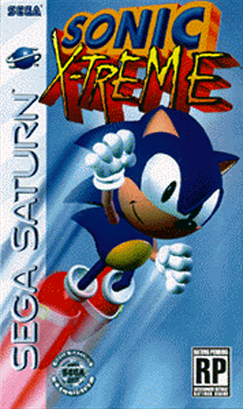
Sonic X-treme was a platform game developed by Sega Technical Institute from 1994 until its cancellation in 1996. It was planned as the first fully 3D Sonic the Hedgehog game, taking Sonic into the 3D era of video games, and the first original Sonic game for the Sega Saturn. The storyline followed Sonic on his journey to stop Dr. Robotnik from stealing six magic rings from Tiara Boobowski and her father. X-treme featured open levels rotating around a fixed center of gravity and, like previous Sonic games, featured collectible rings and fast-paced gameplay.

Sonic the Hedgehog: Triple Trouble is a 1994 platform game developed by Aspect and published by Sega for the Game Gear. It is the sequel to Sonic Chaos (1993) and features classic side-scrolling Sonic gameplay. The player controls either Sonic the Hedgehog or Miles "Tails" Prower as they venture to protect the powerful Chaos Emeralds from Doctor Robotnik, Knuckles the Echidna, and series newcomer Nack the Weasel. Sonic and Tails' unique abilities, as well as various power-ups, can assist the player in gameplay.
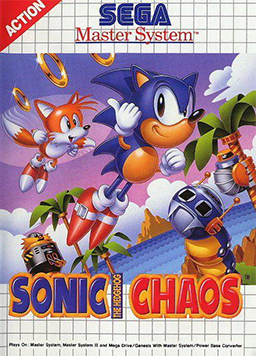
Sonic Chaos is a 1993 platform game published by Sega for the Master System and Game Gear. Players control Sonic the Hedgehog and his sidekick Miles "Tails" Prower in their quest to retrieve the Chaos Emeralds from Doctor Robotnik, who has stolen them to construct nuclear weapons. Gameplay involves running through stages, collecting rings, and defeating enemies. It is largely based on the Master System version of Sonic the Hedgehog 2, and is thus considered a follow-up to that game. Chaos is the first Sonic game for the Master System and Game Gear to feature Tails as a separate playable character with his own unique abilities.

Sonic the Hedgehog is a Japanese video game series and media franchise created by Yuji Naka, Naoto Ohshima, and Hirokazu Yasuhara for Sega. The franchise follows Sonic, an anthropomorphic blue hedgehog who battles the evil Doctor Eggman, a mad scientist. The main Sonic the Hedgehog games are platformers mostly developed by Sonic Team; other games, developed by various studios, include spin-offs in the racing, fighting, party and sports genres. The franchise also incorporates printed media, animations, feature films, and merchandise.
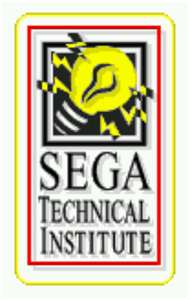
Sega Technical Institute (STI) was an American video game developer owned by Sega. Founded by the Atari veteran Mark Cerny in 1990, STI sought to combine elite Japanese developers, including the Sonic Team programmer Yuji Naka and his team, with new American talent. STI developed games for Sega Genesis, including several Sonic the Hedgehog games, before it was closed at the end of 1996.

Sonic the Hedgehog 2 is a 1992 platform game developed by Sega Technical Institute (STI) for the Sega Genesis. Players control Sonic as he attempts to stop Doctor Robotnik from stealing the Chaos Emeralds to power his space station. Like the first Sonic the Hedgehog (1991), players traverse side-scrolling levels at high speeds while collecting rings, defeating enemies, and fighting bosses. Sonic 2 introduces Sonic's sidekick Miles "Tails" Prower and features faster gameplay, larger levels, a multiplayer mode, and special stages featuring pre-rendered 3D graphics.
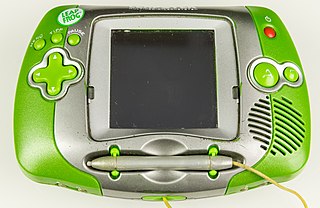
The Leapster Learning Game System is an educational handheld game console aimed at 4- to 10–11-year-olds, made by LeapFrog Enterprises. Its games teach the alphabet, phonics, basic math, and art and animal facts to players. Along with a directional pad, the system features a touchscreen with a stylus pen that enables young users to interact directly with the screen. LeapFrog released the Leapster2 handheld device as a successor to the Leapster in July 2008. The Leapster2 is essentially the previous system with an added USB port and SD card slot. These additions give the ability to play a downloaded full game or short game including the ability to log data on gameplay, such as what has been learned by the user or art created by the user. Downloadable games are not for sale.
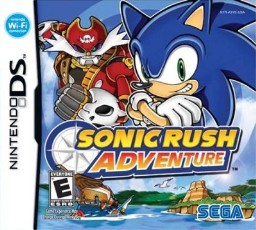
Sonic Rush Adventure is a 2007 adventure platform game for the Nintendo DS and the sequel to 2005's Sonic Rush. It follows Sonic the Hedgehog and Tails, who are teleported to an alternate dimension and seek the help of Blaze the Cat, while battling a band of robot pirates. Gameplay is similar to prior installments in the Sonic the Hedgehog franchise, with players controlling Sonic or Blaze through a series of side-scrolling levels while collecting rings and defeating enemies. Sonic Rush Adventure deviates from prior games with its elements of sea travel, featuring boating minigames that take advantage of the DS's touchscreen.
Tiertex Design Studios Limited was a British software development company and former video game developer based in Macclesfield, England; it was founded in 1986, focusing on porting games to home computers and handheld platforms.

Sonic Dreams Collection is a 2015 art game developed by Arcane Kids for OS X and Windows. It is an unofficial game based on Sega's Sonic the Hedgehog franchise that compiles four minigames presented as unfinished Sonic games, but the game as a whole later reveals itself to be a psychological horror game satirizing the modern Sonic fandom, which is known for its peculiarities. They include the character creator Make My Sonic, the massively multiplayer online role-playing game Eggman Origin, the adventure game Sonic Movie Maker, and the virtual reality (VR) game My Roommate Sonic. They are described in-game as having been developed by a nonexistent Sega studio for the Dreamcast in the late 1990s.
References
Footnotes
- ↑ Harris 2014, p. 386.
- ↑ Smith, Jamin (June 23, 2011). "Sonic the Hedgehog celebrates his 20th birthday". VideoGamer.com. Resero Network. Archived from the original on November 17, 2015. Retrieved November 17, 2015.
- ↑ Kennedy, Sam. "The Essential 50: Sonic the Hedgehog". 1UP.com . Ziff Davis. Archived from the original on August 22, 2004. Retrieved March 8, 2015.
- ↑ Smith 2006, p. 24—29.
- 1 2 Sonic's Edusoft programmer (user "the programmer") (March 16, 2007). "Unreleased Tiertex game? (Sonic Edusoft)". SMS Power. Retrieved April 28, 2018.
{{cite web}}:|author1=has generic name (help) - 1 2 3 4 Matt; Retro Gamer Team (August 17, 2010). "Sonic Edusoft". Retro Gamer . Future plc . Retrieved April 28, 2018.
- ↑ Horowitz, Ken (February 7, 2013). "Interview: Joe Miller". Sega-16. Ken Horowitz. Retrieved January 10, 2014.
- 1 2 3 4 Beuscher, Dave. "Sega Pico - Overview". AllGame . All Media Network. Archived from the original on April 24, 2011. Retrieved April 28, 2018.
- ↑ GamePro 1994, p. 80.
- 1 2 3 "Tails and the Music Maker". AllGame . All Media Network. Archived from the original on November 16, 2014. Retrieved April 28, 2018.
- 1 2 "Sonic the Hedgehog's Gameworld". AllGame . All Media Network. Archived from the original on November 14, 2014. Retrieved April 28, 2018.
- ↑ Parish, Jeremy (June 5, 2014). "Who Makes the Best Sonic the Hedgehog Games?". USgamer . Gamer Network . Retrieved April 28, 2018.
- 1 2 "Les autres apparitions de Sonic". Jeuxvideo.com (in French). June 23, 2011. Retrieved April 28, 2018.
- ↑ Alan Weiss, Brett. "Wacky Worlds Creativity Studio". AllGame . All Media Network. Archived from the original on November 15, 2014. Retrieved April 28, 2018.
- 1 2 3 4 5 6 Bobinator (September 3, 2014). "Sonic's Schoolhouse - Windows (1996)". Hardcore Gaming 101. Archived from the original on October 8, 2014. Retrieved April 28, 2018.
- 1 2 3 4 "Sega Entertainment, Orion Interactive Bring Fun and Games to PC Learning Software". Sega. October 10, 1996. Archived from the original on March 27, 1997. Retrieved April 28, 2018.
- 1 2 "LeapFrog Takes Learning to New Levels In 2007" (PDF). LeapFrog Enterprises. February 12, 2007. Archived from the original (PDF) on March 16, 2007. Retrieved September 4, 2023.
- 1 2 3 LeapFrog Enterprises 2008.
- ↑ "Sonic the Hedgehog's Gameworld". Igromania . Archived from the original on June 23, 2016. Retrieved April 28, 2018.
- ↑ Sega 1996, p. 3.
- ↑ Sega 1994, p. 1.
- ↑ Sega 1994, p. 2—3.
- ↑ Sega 1994, p. 6—9.
- ↑ Coach Kyle 1996, p. 100.
- ↑ LeapFrog Enterprises 2007, p. 2—3.
- ↑ Roberts, David; John Agnello, Anthony (August 10, 2016). "59 Sonic games, explained in 10 words or less". GamesRadar+ . Future plc.
Sources
- Harris, Blake J. (2014). Console Wars: Sega, Nintendo, and the Battle That Defined a Generation. New York, New York: HarperCollins. ISBN 978-0-06-227669-8.
- Smith, Sean (June 2006). "Company Profile: Sonic Team". Retro Gamer . No. 26. Imagine Publishing.
- "Sega's Younger Side: Pico and Sega Club Software". GamePro . No. 65. IDG. December 1994.
- Sonic the Hedgehog's Gameworld Parents' Guide (Instruction manual). Sega. 1996.
- Tails and the Music Maker Parents' Guide (Instruction manual). Sega. 1994.
- Coach Kyle (December 1996). "Sega Games Land on the PC". GamePro . No. 89. International Data Group . Retrieved April 28, 2018.
- Sonic X (Instruction manual). LeapFrog Enterprises. 2005.
- Sonic the Hedgehog Didj (commercial). LeapFrog Enterprises. 2008.